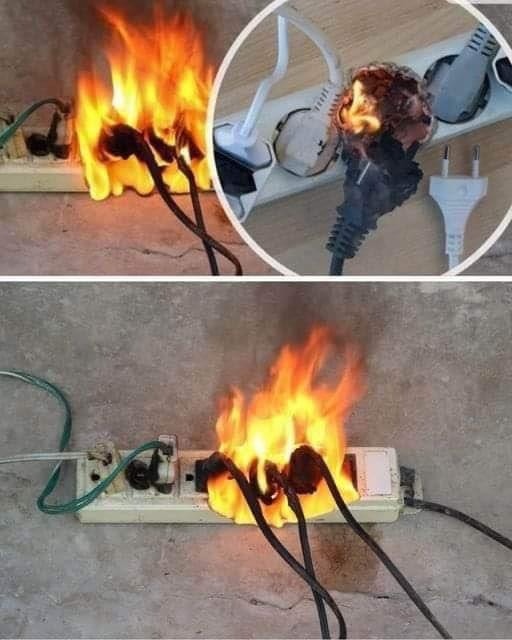1. Refrigerators and Freezers
Why not?
These appliances cycle on and off, drawing a large amount of current each time the compressor kicks in. Power strips aren’t designed to handle these sudden power surges, which can lead to overheating or even fire.
2. Space Heaters
Why not?
Space heaters consume a lot of power quickly and generate intense heat. Plugging them into a power strip increases the risk of overloading the strip, causing melting, sparks, or electrical fires.
3. Microwaves
Why not?
Microwaves draw high wattage and require a dedicated outlet. Using a power strip can cause voltage drops, damage the appliance, or cause the strip to overheat and fail.
4. Coffee Makers
Why not?
Like microwaves, coffee makers use high heat and high current, especially models with built-in grinders or espresso functions. They can overload basic power strips not rated for heavy-duty appliances.
5. Hair Dryers, Curling Irons, and Straighteners
Why not?
These beauty tools consume a lot of electricity and often operate at full capacity within seconds. Plugging them into a strip can quickly overload it and increase the risk of fire in bathrooms where moisture adds extra danger.
6. Air Conditioners
Why not?
AC units pull more amps than a typical strip can handle, especially when starting up. Power strips aren’t equipped for such heavy, continuous loads, and using one may trip circuits or damage the AC.
7. Toasters and Toaster Ovens
Why not?
These appliances create high levels of heat and power draw. Since power strips are often placed near walls or other items, the risk of fire increases significantly with these devices.
8. Washing Machines and Dryers (Portable or Otherwise)
Why not?
These large appliances require a steady and powerful current. A power strip can’t handle the fluctuating loads, which can cause electrical failure or serious short-circuiting.
9. Another Power Strip or Extension Cord (a.k.a. Daisy Chaining)
Why not?
Plugging one power strip into another is known as daisy chaining, and it’s a major fire hazard. It can easily lead to overloading, overheating, and even electrical fires. Most building codes and fire departments strongly advise against it.
🔥 Final Tip:
If a device heats up, cycles on/off, or uses a motor, do NOT plug it into a power strip. Use a dedicated wall outlet instead, ideally one with surge protection and appropriate amperage.
Would you like this turned into an infographic or printable safety poster?
